Embracing the Culture: An Introduction to Japanese Green Tea
Japanese Green Tea!! Other kinds of valuable green tea. Let’s discover ” Japanese Green Tea Benefits ” and the world of Japanese green tea, a beverage that transcends being a mere drink and embodies a timeless tradition deeply ingrained in Japanese culture.
The Historical Significance of Green Tea in Japanese Culture
In Japan, green tea is referred to as ‘Ocha’ and has a long history that can be traced back to the 9th century. Initially, it was considered a luxury item only the nobility enjoyed, but it later became a fundamental part of Japanese society. Its cultural significance is exemplified by the tea ceremony, also known as ‘Sado.’ This ceremony involves a spiritual process of preparing and presenting green tea, symbolizing peace, harmony, and happiness.
Overview of Different Types of Japanese Green Tea
There are numerous options for Japanese green tea, each with distinct flavors and preparation techniques. The most popular variety is Sencha, a steamed tea with a refreshing, grassy flavor. Powdered green tea, known as Matcha, is renowned for its vibrant color and smooth, creamy taste. Gyokuro is another variety of tea grown in the shade, which has a sweet flavor. Genmaicha is a mixture of sencha and roasted brown rice, that is also an option.
Popularity and Daily Consumption in Japan and Its Global Influence
Green tea is essential every day in Japan and is enjoyed throughout the day. It is served in households, offices, and vending machines, showcasing its profound impact on daily life. The global effect of Japanese green tea is indisputable. From matcha lattes found in cafes worldwide to beauty products infused with green tea, the world has fully embraced the culture and benefits of Japanese green tea. Follow me as I delve into the intriguing universe of Japanese green tea, an emblem of culture, history, and a wellness-oriented lifestyle.
Unveiling the Leaves: What Makes Japanese Green Tea Unique?
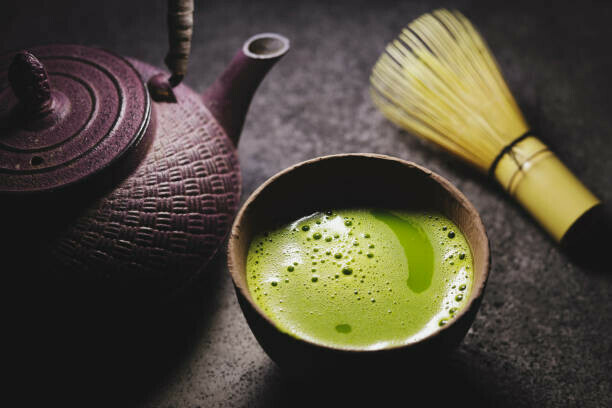
Japanese green tea is rich in history and flavor, and its distinct qualities make it unlike any other kind of tea. Let us explore the reasons why it is such a unique beverage.
The Cultivation and Processing Methods of Japanese Green Tea
The distinctiveness of Japanese green tea originates from the tea fields. Before harvesting, the tea plants are shaded for several weeks to enhance the levels of chlorophyll and give the leaves a vibrant green hue. After the harvest, the leaves are steamed to prevent oxidation, preserving their color and nutritional attributes. This completely contrasts with other teas, which are typically fermented and oxidized.
Comparison with Other Types of Tea, Highlighting Unique Properties
Japanese green tea has a unique umami taste compared to other teas due to the shading process. Furthermore, it contains more antioxidants because of the steaming process, unlike black or oolong teas, which undergo fermentation and oxidation.
Distinctive Flavor Profiles of Japanese Green Tea
Japanese green tea has different flavors, ranging from sweet and creamy matcha to savory and astringent sencha. Other factors can impact the taste of tea, including the variety of tea plants used, the geographical location of where it grows, and the methods of processing it undergoes
Steeped in Benefits: The Nutritional Profile of Japanese Green Tea
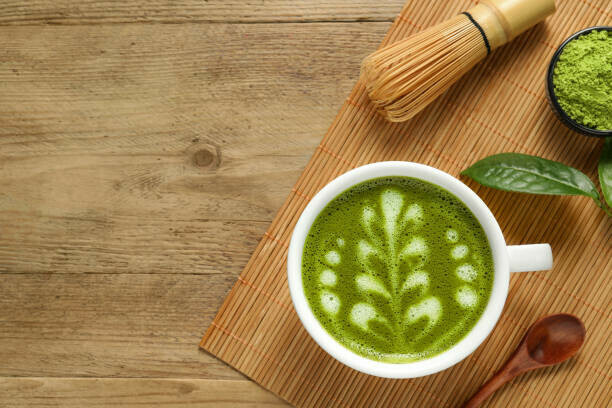
Not only is Japanese green tea a delicious drink, but it also contains numerous health benefits.
Key Vitamins and Antioxidants Found in Green Tea
Green tea is a goldmine of antioxidants, such as vitamins C and E. It is also a great source of catechins, which combat oxidative stress within the body and thereby promote overall health.
Catechins and Their Health-Promoting Properties
To explore their potential health benefits, extensive research has been conducted on catechins, the primary type of antioxidant present in green tea. These compounds have been associated with many positive outcomes, including better heart health, weight loss, and even protection against cancer.
Nutritional Comparison with Other Beverages
Green tea is a healthy beverage free of artificial ingredients and sugar, making it a low-calorie alternative to other drinks. In addition to providing hydration, it offers a wide range of nutritional benefits. We invite you to join us as we delve into Japanese green tea, a delicious and nourishing drink.
A Sip of Wellness: Health Benefits Associated with Japanese Green Tea
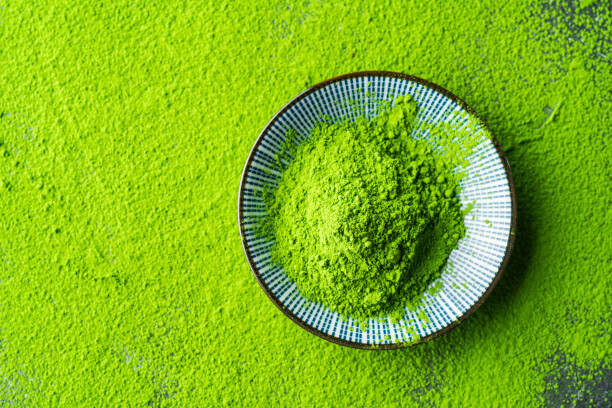
Japanese green tea offers much more than a simple refreshment. It serves as a source of wellness, containing a multitude of health advantages.
Studies on Green Tea and Cardiovascular Health
Studies have indicated that a consistent intake of green tea can benefit cardiovascular well-being. It can aid in lessening harmful cholesterol levels and blood pressure, thus lowering the likelihood of heart ailments.
Potential Benefits for Metabolic Health and Weight Management
Green tea is frequently linked with weight loss and better metabolic well-being. The presence of catechins in green tea, especially EGCG, enhances metabolism and assists in the burning of fat.
Anticancer Properties and the Role of Epigallocatechin Gallate (EGCG)
Research has been conducted on EGCG, a potent antioxidant in green tea, for its possible anticancer effects. It is thought to impede the proliferation of cancer cells and thwart the propagation of diseases.
Cognitive Function and the Possible Protective Effects Against Neurodegenerative Diseases
Green tea has a reputation for boosting brain function and protecting against neurodegenerative illnesses. Combining caffeine and L-theanine in green tea can enhance brain function, improve mood, and increase alertness.
Harnessing Harmony: Green Tea’s Role in Stress Reduction and Mental Clarity

Green tea consumption is not limited to physical well-being alone. It is also significant for attaining mental lucidity and minimizing stress levels.
L-theanine: Understanding Its Calming Effects on the Brain
An amino acid (L-theanine) found in green tea is known to have a calming effect on the brain. It enhances dopamine and serotonin production, which promotes relaxation and enhances the quality of sleep.
Research on Green Tea’s Impact on Mental Health and Stress Levels
Research has indicated that green tea, owing to its presence of L-theanine, can help alleviate stress and anxiety. Additionally, it enhances cognitive function and uplifts mood, promoting general mental wellness.
Personal Anecdotes and Traditional Practices Linking Green Tea with Mindfulness
The traditional tea ceremony in Japan is considered a mindfulness practice. Preparing and consuming green tea helps one concentrate, be present, and value the present moment. We invite you to explore Japanese green tea, which has the potential to nourish the body, calm the mind, and foster spiritual growth.
Beyond the Brew: Innovative Uses of Japanese Green Tea in Daily Life

Green tea from Japan is an essential product in the country, and it has become a part of daily life, not only as a beverage but also in other forms.
Culinary Uses: Green Tea as an Ingredient in Japanese Cuisine
In Japanese cuisine, green tea is a highly versatile ingredient that can be used in many dishes. Traditional sweets often use the delicate ‘matcha,’ while savory dishes incorporate the robust ‘hojicha’ flavor. With its unique depth of flavor and color, green tea can enhance the taste of various dishes.
Green Tea in Skincare: Exploring Its Topical Benefits
Skincare products often contain green tea due to its antioxidant-rich properties. Green tea’s high concentration of antioxidants makes it a popular ingredient in skincare. Its anti-inflammatory properties provide relief to irritated skin, and its antioxidant properties safeguard the skin from damage caused by environmental factors.
DIY Green Tea Recipes for Home Remedies and Personal Care
There are several different ways to include green tea in your personal care routine at home, from an essential green tea face mask to a refreshing tea bath soak. By using these do-it-yourself recipes, you can take advantage of the natural benefits of green tea for a spa-like experience.
Communing with Nature: The Environmental Impact of Japanese Green Tea Farming
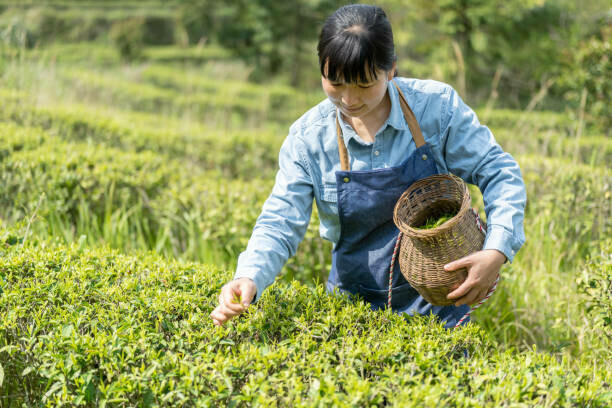
Producing high-quality green tea is one of the many objectives of its cultivation. It is equally important to ensure that nature is in balance and harmony.
Sustainable Farming Practices in the Green Tea Industry
Many Japanese tea farmers employ sustainable farming practices, such as using natural fertilizers and practicing crop rotation, to preserve the health of the soil and the quality of their tea.
The Role of Organic Certification in Promoting Eco-Friendly Tea Production
Certification for organic farming is essential, as it encourages the production of environmentally friendly tea. It ensures that the tea is grown without harmful pesticides and fertilizers, protecting both the environment and the consumer.
Effect of Tea Farming on Biodiversity and Local Ecosystems
Tea farming can have a positive impact on local ecosystems. The tea fields provide a habitat for various wildlife, and the shade trees used in tea cultivation help maintain biodiversity.
Join us as we continue to explore the world of Japanese green tea, a beverage that nourishes the body, soothes the mind, and nurtures the soul.
Mindful Sipping: Ethical Considerations and Fair Trade in the Green Tea Market

As we relish our Japanese green tea, it is worth pondering the voyage it has undergone, from the tea plantations to our cups, and the ethical aspects that accompany it.
Challenges in the Global Tea Trade and Workers’ Rights
The tea trade is a complex worldwide system involving farmers, workers, traders, and consumers. Despite the delightful green tea it provides, this trade presents difficulties. The treatment of workers is a significant concern, and some regions have issues with low wages, inadequate working conditions, and child labor.
Importance of Fair Trade Certification for Japanese Green Tea
Certification for Fair Trade aims to tackle the issues above by guaranteeing that farmers and workers are paid equitable prices and operate in safe environments. Acquiring this certification for Japanese green tea ensures that the tea you enjoy has a great taste and contributes to doing good.
How Consumers Can Make Ethical Choices When Purchasing Green Tea
We, as consumers, hold the power to impact the market by choosing Fair Trade-certified green tea. This choice supports ethical practices within the tea industry. Additionally, we can opt for organic certifications, which guarantee environmentally friendly farming practices. It’s important to remember the journey that our Japanese green tea has undergone and to make a point of mindfully sipping our tea each time we drink it.
Brewing the Perfect Cup: Tips and Traditions for Enjoying Japanese Green Tea
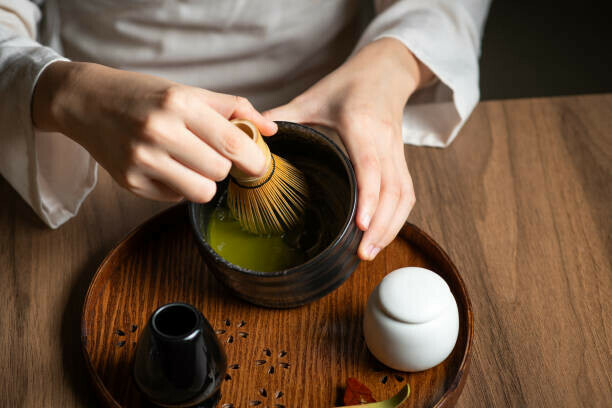
Green tea from Japan is not just any ordinary drink; it has a more profound significance as a ritual, a custom, and an adventure of taste. Let us discover the right way to make the ideal cup of Japanese green tea and savor its flavor to the fullest.
Different Brewing Techniques for Optimal Flavor and Health Benefits
Brewing Japanese green tea is a skillful practice, as the water temperature, steeping duration, and amount of tea used can significantly impact the tea’s taste and health advantages. For instance, to highlight its subtle sweetness and prevent bitterness, ‘Sencha’ requires 70–80°C water temperature and only one minute of steeping. In contrast, ‘Matcha’ requires whisking with hot water using a unique bamboo whisk until it becomes frothy.
Tea Ceremony Customs and Their Significance in Japanese Culture
The act of preparing and serving Japanese green tea, known as ‘Sado,’ is a ceremonial dance. It is not just about drinking tea but a way of life representing harmony, respect, purity, and tranquility. Each movement in the tea ceremony has a purpose and meaning, making it a form of meditation and a celebration of the present moment.
Pairing Green Tea with Food: Complementing Flavors and Enhancing the Experience
Pairing food with green tea can enhance the experience of both the meal and tea drinking. ‘Sencha,’ with its umami flavor, goes well with sushi and seafood, while ‘Gyokuro,’ with its sweetness, complements desserts and chocolates. Savory dishes pair well with ‘Hojicha,’ which has a roasted and nutty flavor. So, next time you indulge in your green tea, remember to follow these tips and traditions, as it’s not just about the taste but also about embracing the culture, the ceremony, and the moment.
I would love to receive your comments down below, in case of any.

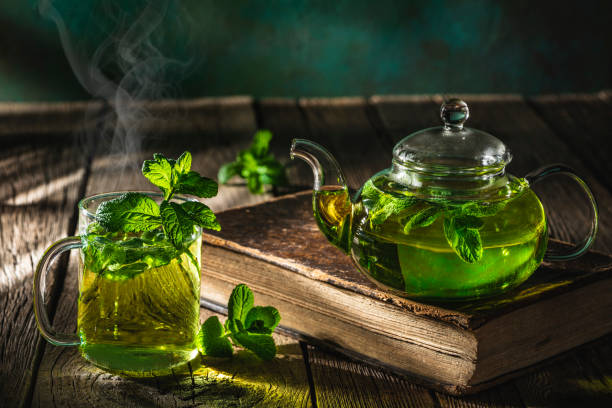
I recall the first time I ever drank green tea, it was years ago at an Oriental restaurant in Iowa of all places. I was very young and really did not think much of the beverage at the time. I am not sure if I had authentic Japanese Green Tea or not.
Regardless, had I known what I learned today and have learned over the years about green tea, I would have made sure to include it in my daily diet from that day on.
I have been seeing it as a topical, and have scoffed at it, but after reading your article on the topical benefits, I am rethinking my opinion there.
Thanks for teaching me something new.
Stacie
Hi Stacie,
Thank for your comment and I am glad that I have opened your eyes to the benefits of green tea. Why don’t you start today? It is never too late, my dear As long as we breathe, we still have time to do whatever we please.
Start incorporating green tea into your daily diet, and you will never regret it. Just try to buy good organic brands.
Thanks again for your nice comment, and stay safe.
Your post is definitely a comprehensive guide to the world of Japanese great tea! It’s great the way you dug into its cultural significance, various types, health benefits , and even its environmental impact.
What would you say is the number one benefit of drinking Japanese green tea? Is it possible to narrow it down?
– Scott
Hey Scott,
I’m thrilled you enjoyed the post.
Choosing just one Japanese green tea benefit is tricky because of the many benefits. But if I had to pick just one, I would highlight its strong antioxidant qualities, mainly because of the catechins like EGCG.
These antioxidants are essential for maintaining cardiovascular health and lowering the risk of some cancers. They also play a significant role in supporting overall health by preventing oxidative stress. This unique combination of health advantages and cultural significance makes Japanese green tea an exceptional brew.
Please take some time to investigate this further and consider how it might help you personally.
Hi, I am becoming more and more conscious of what I eat and drink, and although I have tried green tea in the past it has never become part of my regular diet and routines. I will make a special effort to make it such, for all the reasons that you have outlined in your article. I was particularly interested in the anti cancer properties, and I think i can benefit from this and all of the other benefits that you outlined. Thank you for sharing your knowledge, Alan.
Hi Alan,
It’s really fantastic to hear that you’re taking steps towards a more conscious diet, and I’m so glad that the benefits of Japanese green tea caught your attention.
The anti-cancer properties and other health benefits make green tea an excellent addition to any wellness routine.
If you need tips on integrating it smoothly into your daily habits or have any questions, please don’t hesitate to reach out.
Thank you for reading and responding to the article, your journey to better health is inspiring. Please, keep me posted on your progress.
I recently came across your webpage on the benefits of Japanese green tea, and I wanted to express my appreciation for the insightful content you’ve provided. Your article is not only well-researched, but it also beautifully captures the numerous health advantages of Japanese green tea.
I particularly enjoyed your detailed explanations of the antioxidants found in green tea and their potential health benefits, as well as your practical tips on incorporating green tea into a daily wellness routine. Your content is not only informative but also engaging.
Could you elaborate on the specific types of Japanese green tea that offer the most health benefits, and how they differ in terms of flavor and preparation? I wanted to commend you on the excellent work you’re doing. The clarity and depth of your explanations truly set your webpage apart.
Best Regards,
Gabriel John
Hi Gabriel,
Thank you for your kind and appreciative message. I’m so happy you enjoyed reading the article about the advantages of Japanese green tea.
Japanese green tea has numerous health benefits due to its high antioxidant content. I’m pleased that you found the detailed explanations and practical tips enjoyable.
In response to your inquiry about the different types of Japanese green tea and their health advantages, here’s a brief summary:
1. **Matcha**: This powdered tea is created from shaded leaves that are ground into a fine powder. Matcha is famous for its abundance of antioxidants, especially catechins, which positively affect health. It has a rich, savory flavor and is commonly whisked with hot water to produce a frothy beverage.
2. **Sencha**: The most popular type of Japanese green tea, Sencha, is produced from steamed tea leaves. It has a fresh, grassy flavor and is rich in antioxidants. Sencha is typically steeped in hot water for a few minutes.
3. **Gyokuro**: Similar to Matcha, Gyokuro is cultivated in the shade, intensifying its chlorophyll levels and resulting in a gentle, sweet flavor. It’s one of the highest-quality Japanese green teas known for its delicate taste and high catechins and amino acids.
4. **Hojicha**: This tea is made from roasted green tea leaves, giving it a distinctive, toasty flavor. In contrast to other types of green tea, hojicha contains less caffeine, making it suitable for individuals who are sensitive to caffeine.
5. **Genmaicha**: Genmaicha blends green tea leaves and roasted brown rice, offering a nutty, slightly sweet flavor. The flavor is gentler and more subtle, making it more than an excellent option for people just starting to explore green tea.
Each type of Japanese green tea has distinct characteristics in terms of flavor and preparation, but they all offer significant health benefits.
Thank you again for your thoughtful comment and for appreciating the article. If you have any further questions or need more detailed information, feel free to ask. I’m here to help.
Best regards,
Sara